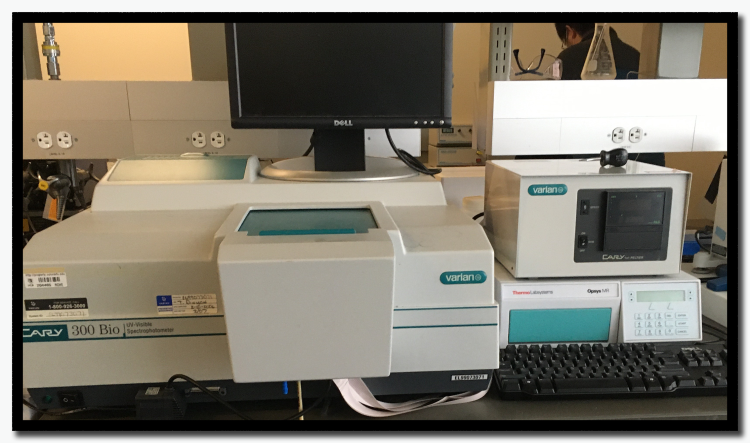UV/Vis spectroscopy a widely used analytical technique in chemistry, biological sciences, biochemistry and biophysics. It uses the absorption of light by molecules in the wavelength range from middle and near UV (200 nm-400 nm) to visible light (400-900 nm).
The line shape of absorption spectra, the absorption maxima and the absorption strength are characteristic for specific chromophores. They depend on the electronic properties and on chemical environment of the chromophore. UV-Vis spectroscopy is a powerful tool to identify and quantify chromophores and to follow reaction kinetics.
In biochemical and biophysical application it can be applied by detecting intrinsic chromophores of proteins, RNA and DNA or in colorimetric assays observing reaction partners that undergo a measurable color change due to either complex formation with the biological macro molecules or to chemical reactions catalyzed by biological macro molecules.


